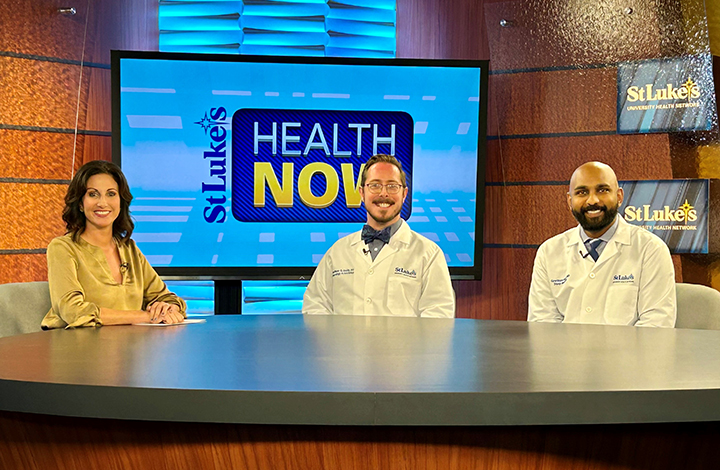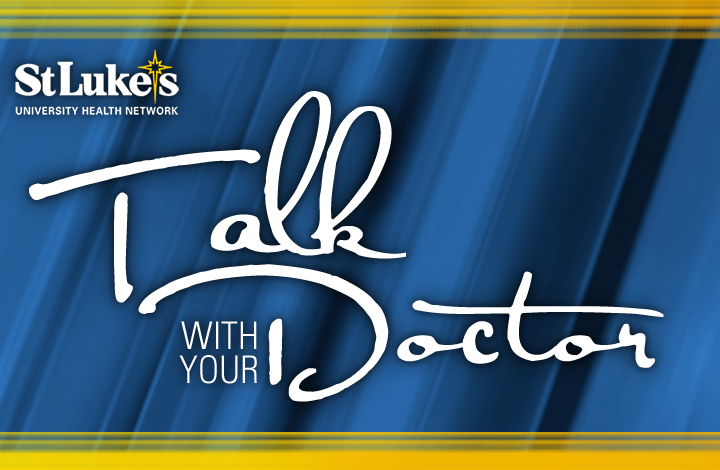News
Surveillance devices alert hospital staff at first signs of patients’ deteriorating health.
St. Luke’s University Health Network based in Bethlehem, Pa., has deployed a groundbreaking patient safety program that harnesses the latest in healthcare technology, revolutionizing the surveillance of hospital patients’ vital signs.
The program’s 24/7 monitoring alerts clinicians to patient deterioration, resulting in decreased morbidity and mortality. It has already proven successful, saving lives when piloted at St. Luke’s Bethlehem Campus, and now it is being extended to St. Luke’s Monroe, Pa., and Warren, N.J., campuses.
The technology continuously measures a patient’s pulse rate and the amount of oxygen in the blood, in contrast to the traditional practice of monitoring vital signs only periodically. It also is capable of more frequent, automated blood pressure measurement.
St. Luke’s is pioneering this approach nationally. No other hospital in the region and only a handful across the county has such monitoring on their medical surgical units.
“Checking vital signs every four or eight hours, which is the current standard of care, is inadequate for some patients, whose deteriorating health may go unnoticed during these intervals,” explained Aldo Carmona, MD, chairman of the department of anesthesia and critical care, and senior vice president of clinical integration, who is leading the initiative.
But now, through continuous monitoring, doctors and nurses are immediately alerted as soon as subtle signs of failing health are sensed, enabling a quicker therapeutic response to emergent situations.
“Continuous and in-depth vital signs monitoring provides a valuable level of data that can be acted upon quickly to save lives,” Dr. Carmona said.
The technology, developed by Masimo Corp., has been shown through clinical trial to decrease mortality, intensive care unit readmission and rapid response calls. At St. Luke’s, surveillance data will be automatically and continuously entered into the patient’s electronic health record – an industry-first innovation that will provide clinicians with a fuller, more detailed picture of patients’ condition.
“St. Luke’s commitment to patient safety and improved outcomes is inspiring and very much in keeping with Masimo’s own values,” said Jon Coleman, Masimo’s President of Worldwide Sales, Professional Services and Medical Affairs. “We are pleased to continue our partnership with them and help expand their continuous monitoring solutions.”
The monitoring system consists of a wireless armband and pulse oxygen sensor that continuously transmit vital scores to caregivers when signs of trouble arise. Eventually, the system will also include an acoustic respirator monitor that sends breathing measures second-by-second, increasing the accuracy of surveillance in patients with pneumonia, sepsis and other illnesses for which respiratory rates changes are critical symptoms .
Continuous monitoring will be deployed at other St. Luke’s campuses over the next two years, Carmona said. “This is another example of our Network investing in assuring the safest possible patient environment, and we are pleased to have found a partner to provide the leading technology, which enables us to do so.”
###
About St. Luke’s
Founded in 1872, St. Luke’s University Health Network (SLUHN) is a fully integrated, regional, non-profit network of more than 15,000 employees providing services at 10 hospitals and more than 300 outpatient sites. With annual net revenue greater than $2 billion, the Network’s service area includes 10 counties: Lehigh, Northampton, Berks, Bucks, Carbon, Montgomery, Monroe and Schuylkill counties in Pennsylvania and Warren and Hunterdon counties in New Jersey. Dedicated to advancing medical education, St. Luke’s is the preeminent teaching hospital in central-eastern Pennsylvania. In partnership with Temple University, St. Luke’s created the region’s first and only regional medical school campus. It also operates the nation’s longest continuously operating School of Nursing, established in 1884, and 28 fully accredited graduate medical educational programs with 226 residents and fellows. St. Luke’s is the only health care system in central-eastern Pennsylvania to earn Medicare’s five-star rating (the highest) for quality, efficiency and patient satisfaction. In 2018, St. Luke’s was named a Top Hospital in the Teaching Hospital category by the Leapfrog Group. It has repeatedly earned the 100 Top Major Teaching Hospital designation from IBM Watson Health (formerly Truven Health Analytics) – six times total and four years in a row including 2018. It has also been cited by IBM Watson Health as a 50 Top Cardiovascular Program. Utilizing the EPIC electronic medical record (EMR) system for both inpatient and outpatient services, the Network is a multi-year recipient of the Most Wired award recognizing the breadth of the SLUHN’s information technology applications such as telehealth, online scheduling and online pricing information. St. Luke’s is also recognized as one of the state’s lowest cost providers.



